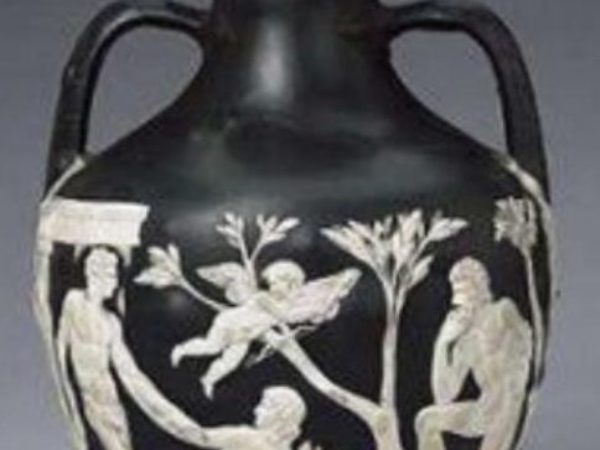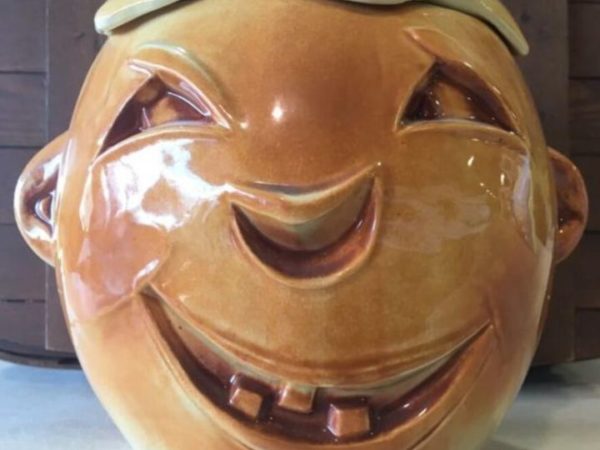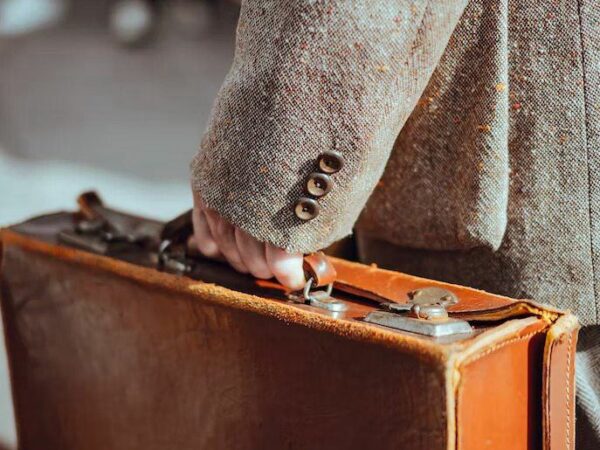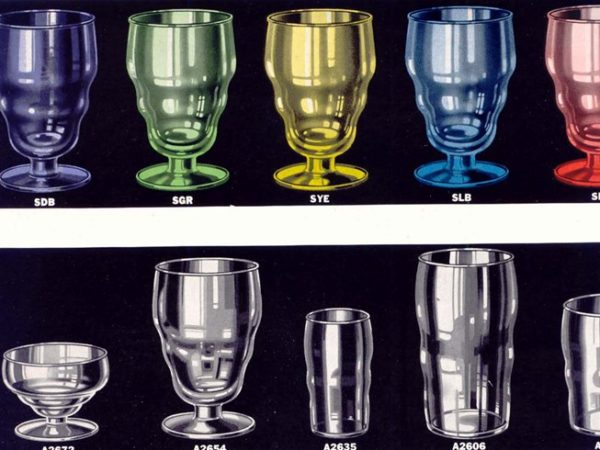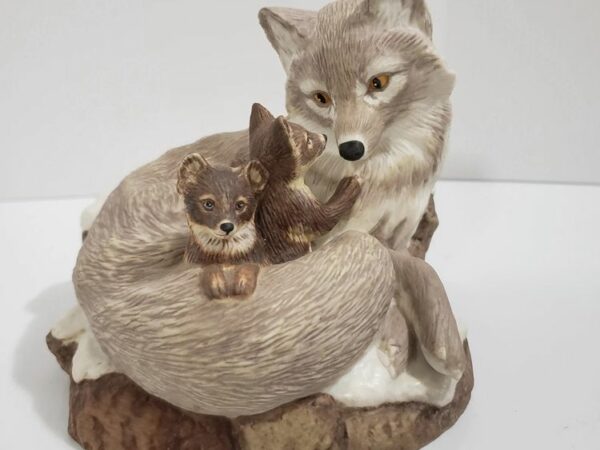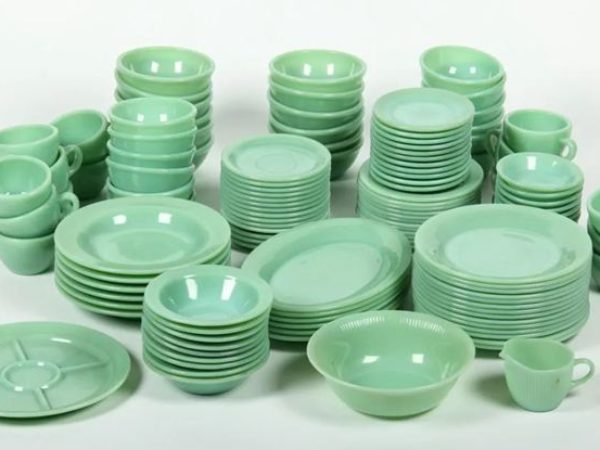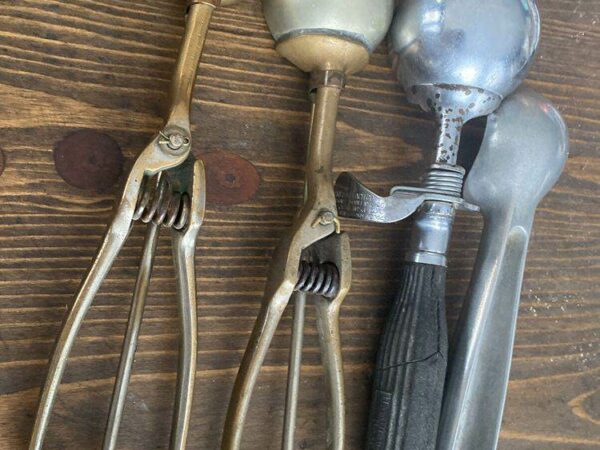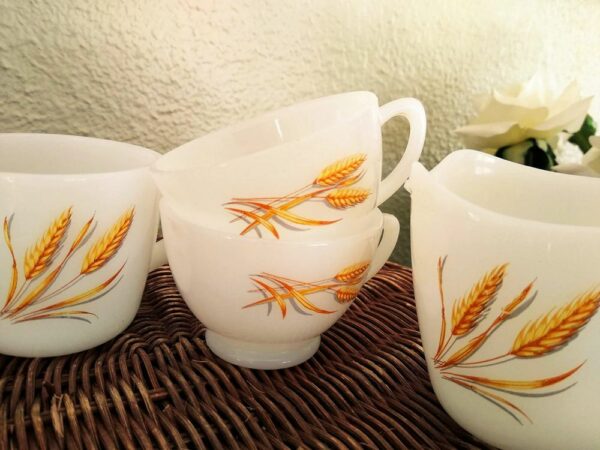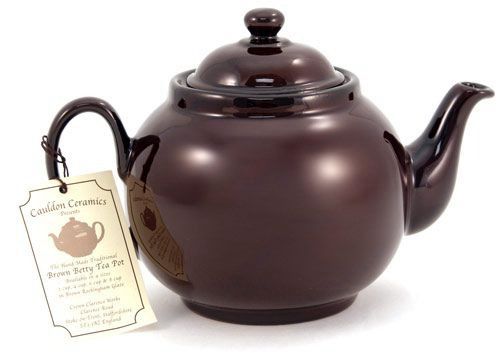
Brown Betty teapot is as British as Uncle Ben, and any true tea drinker in the U.K. knows this. Collectors value this teapot model for many reasons, from its simplistic design to its high-quality brew.
You can get a regular used Brown Betty Teapot in good condition for as low as £15, while a rare model sells at about £200. Both prices are relatively affordable, and all you need are the tools for collection.
We’ll take you through identification methods, and you can use the value guide at the end while shopping. Let’s go.
Table of Contents
The Brown Betty Teapots History
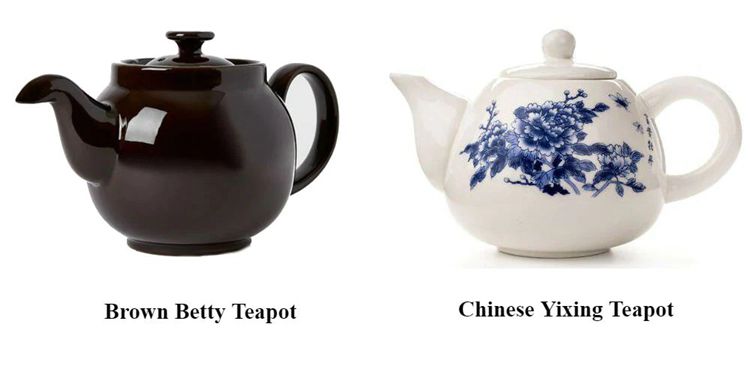
Year |
Teapot Type/Material |
c. 1695 |
Red Clay (Etruria Marl) |
c. 1700s |
Brown Betty (Mass Produced model) |
19th Century |
Alcock, Lindley, and Bloore (Company Patent) |
Mid-19th century – Date |
Cauldon Ceramics of Staffordshire |
Brown Betty teapot’s existence dates back to the 1600s when brothers David and John Philip Elers made the first red clay teapot. The material, a.k.a. Etruria Marl, was indigenous to Staffordshire and notable for its high heat retention and durability when molded.
Before red clay’s discovery in 1695, elite English tea drinkers relied on imported Asian Yixing teapots for their brew. Regular folks who couldn’t afford the expensive Asian teapot resorted to using locally-made crude pots and alternative brewing methods.
Thanks to the Elers brothers’ new technology, the red clay pots revolutionized tea drinking in England, and other manufacturers began using Etruria Marl as raw material. By the mid-18th century, mass production made teapots accessible to the masses.
Brown Betty teapots were the most popular of these mass-produced items and started as unglazed models. To differentiate the teapot from other brands, Brown Betty manufacturers lightly over glazed the teapot with Rockingham changing the red clay to brown hence the name.
The first Brown Betty teapots drew inspiration from the coffee pot but evolved into its unique round body in the 1800s. British monarch Queen Victoria drank exclusively from the Brown Betty teapot, making it the most coveted model in 19th-century England.
Due to the increased demand for Brown Betty teapots, the model became a huge moneymaker. Manufacturers Alcock, Lindley, and Bloore took the opportunity and patented the teapot design c. 1920.
Other companies sprouted in that period, but only Cauldon Ceramics of Staffordshire remains today. Before we proceed, bear in mind that Brown Betty is a model and not a company name, so this is about identifying the style.
How To Properly Tell if a Brown Betty Teapot is the Real Deal in Six Steps
Brown Betty teapots are prone to reproductions and false labeling as one of the most popular models for collectors. You can, however, identify an authentic Brown Betty through the signs we’ll list and explain below.
Step 1: Identify the Manufacturers Name
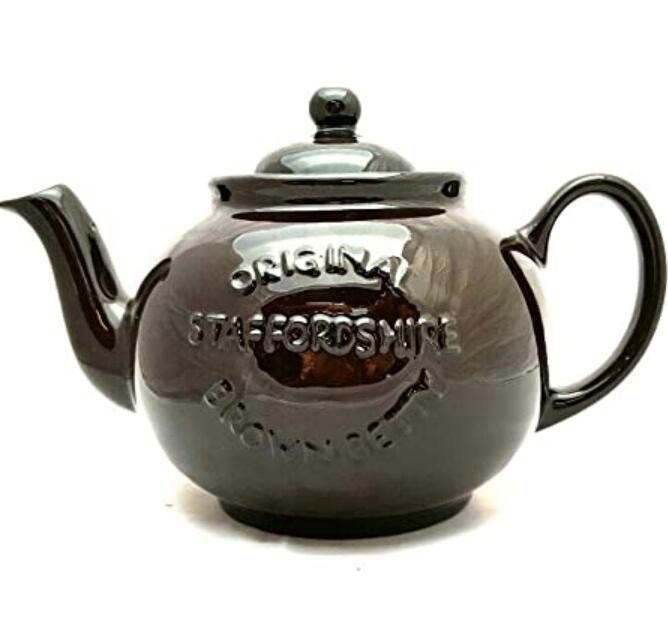
Naming is the best way to identify anything through a label or a mark, and Brown Betty teapots have the latter. Notable manufacturers of Brown Betty teapots are Cauldon Ceramics of Staffordshire 21st C and Alcock, Lindley, and Bloore 20th C.
Check the teapot’s bottom for a sign that reads Made in England, Original, Betty “Brand Name,” or all, depending on the production year. For Alcock, Lindley and Bloore, the mark would be a bold “A” with an “L” inside the upper triangle and the B underneath the line.
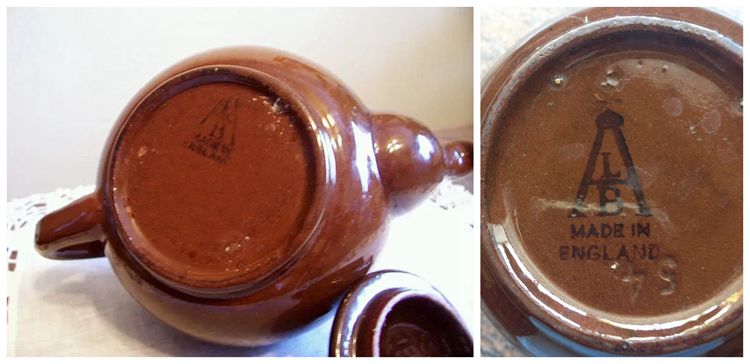
The bottom of a Brown Betty teapot is shaped like a ring, and it’s often unglazed regardless of the production year. That allows the manufacturer to inscribe the maker’s mark for identification and gives the collector a clear look at the red clay used in making the teapot.
If you see a Union Jack sticker on the teapot, it’s a modern Brown Betty made by Cauldon Ceramic. Note that all Brown Betty teapots then and now are manufactured exclusively in Stoke-on-Trent and Staffordshire because that’s where the red clay used for molding is found.
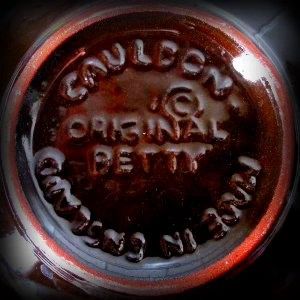
These modern Brown Betty teapots also embossed manufacturer marks on the side. You’d see the words forming a circle, “Original over a bold Staffordshire and Brown Betty underneath,” closing the ring.
Cauldon Ceramics of Staffordshire
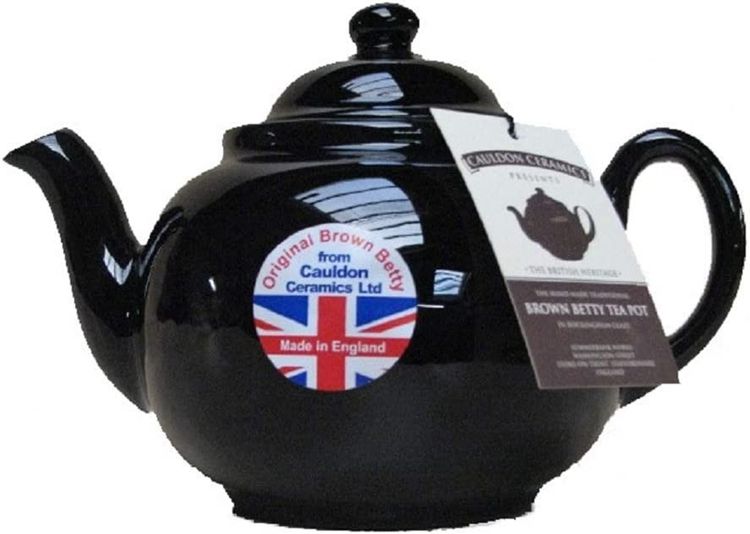
Cauldon Ceramics of Staffordshire, the former Caledonia Pottery, is the last standing Brown Betty teapot manufacturer in the 21st century. The company has a staff strength of eight people molding an average of 70 teapots per person daily.
Step 2: Examine its Shape Properly
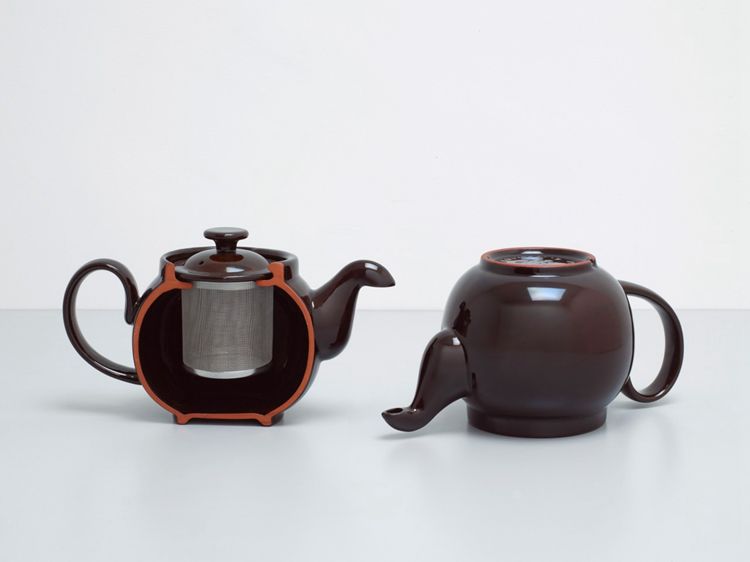
Brown Betty has a distinct globe form that allows swirling when pouring hot water and ensures the best flavor release from the tea leaves. While this technique is great for tea-making, it doesn’t affect aesthetic value.
There’s a single ergonomic handle on the teapot, allowing easy carriage without burning your knuckles. 21st-century Brown Betty teapots made by Cauldon Ceramics also have models with double handles and saucers.
On the opposite end is the spout, which has a unique design, as shown in the picture above. It’s formed like an elephant’s trunk with a wider bottom. Its neck thins out towards the top. This spout ensures a free-flowing stream of tea from the pot to your teacups.
Finally, the teapot has a semi-circular lock-lid cover with a round handle for easy opening without burning your fingers. This prevents leakage or tipping when pouring and fits seamlessly with the cylindrical filter inside.
Step 3: Recognize Standard Sizing
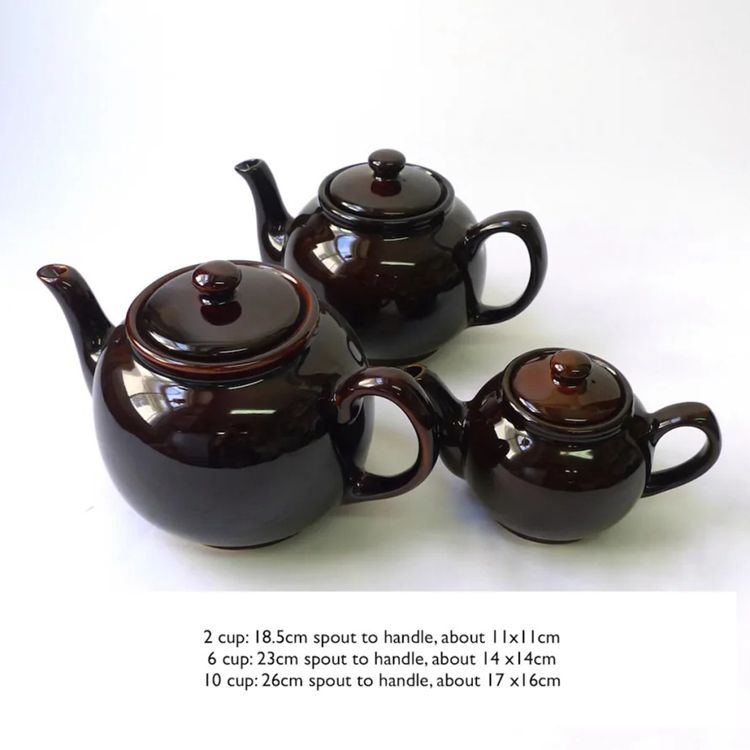
Use cup size when measuring a Brown Betty teapot without an actual measuring device (like tape). Each size served different numbers of cups, from two being the smallest to eight being the biggest. In-between sizes included the four and six-cup servers.
Also, note that each pot has room for extra servings, so if you’re using a traditional measurement, look out for one or two extra full-cup servings.
To measure by size, use capacity, and cup serving. Your 2-cup teapot should serve three cups of about 22 ounces of tea, while the 6-cup should hold 36 ounces.
Step 4: Formation Technique
Watch the Making of a Brown Betty teapot.
Manufacturers used molds to make Brown Betty teapots after 1920 but models formed before that year were pieced together by hand. Spotting the difference at a glance might be difficult, however, upon closer inspection, you can see the seamless fusion of the mass-produced models.
These vintage and modern models often have more streamlined spouts than antique designs due to the availability of machines to mold them. Modern Brown Betty teapots made by Cauldon Ceramics of Staffordshire are lead-free, guaranteeing the best quality brew.
Step 5: Details On the Packaging
One benefit of finding a Brown Betty teapot with the original packaging is the detailed tag on the side. It often details the process of manufacture and all materials used to form the teapot.
You’d also find out the exact production location, Trent-On-Stoke or Staffordshire, both towns in England.
Step 6: It Must Be Brown or Cobalt
As the name suggests, the Brown Betty teapot must be brown; however, the texture is different. There is an overglazing with newer Brown Betty teapots made in the 19th century and beyond. For older models, there’s no glazing causing the teapot to have a matte finish.
The Rockingham glaze gives the teapot its signature dark brown glossy look. Although they look alike, the Japanese red clay teapot and the unglazed Brown Betty teapot aren’t the same. Look out for the difference using the identification tips above.
Note that 21st-century Brown Betty teapots have cobalt blue models, which aren’t fake, although they’re not vintage or antique. They’re also tagged with small Union Jack stickers to indicate the originating country.
Other Manufacturers of Brown Betty Teapots
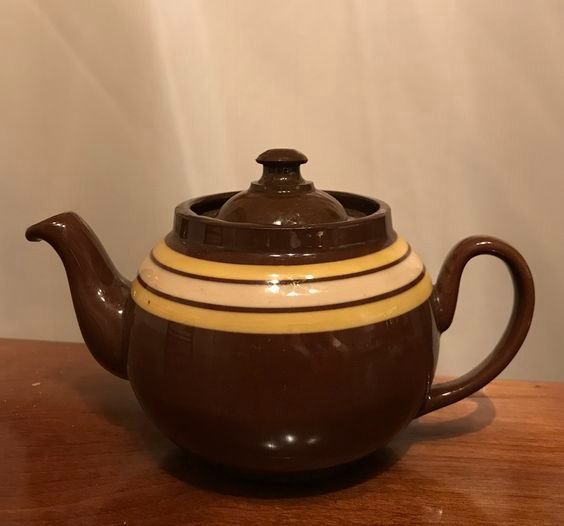
While known Brown Betty teapots have plain glazing or matte finishes depending on the production year, there’s a group made by unknown manufacturers with multi-colored paint jobs. They either have bands, marbled paints, or both.
RE Found Objects tagged them old originals from the 19th century, and their heavy glazing would put them at the end of the 1800s.
Watch a potter add the Rockingham Glaze to a Brown Betty teapot below.
Unlike other thin-layered teapots made of White Kaolin Clay, the red clay used for Brown Betty teapots produces thick pots that preserve tea flavors. They also retain heat making the tea stay hot for long periods without burning the server’s hands when pouring.
Value Guide for Buying and Selling Brown Betty Teapots
When you consider why many collectors value the Brown Betty teapot, its durability, beauty, and affordability come to mind. Apart from these obvious reasons, collectors choose Brown Betty teapots based on a set of factors.
How Popular Is the Model?
Although the Rockingham glazed Brown Betty teapot is the most popular today, it’s not always the most valuable. Rare models like the unglazed red clay teapots of the early 18th century would sell at higher values.
A new 2-cup Brown Betty teapot made by Cauldon Ceramic sells for an average of £39.99, while the biggest size, an 8-cup teapot, sells between £60.99 to £64.98
Is It in Excellent Condition?
No one wants a teapot in poor condition, although one with minimal damage may fly with certain collectors. Inspect every part of your Brown Betty teapot, from the handle to the cover, spout, and interior.
One of the selling points of a Brown Betty teapot has always been its lead-free interior so ensure you have the real thing before paying. If it’s in good condition, there’s a guarantee of low maintenance on the teapot because it’s easy to clean.
However, if you buy a fake model, it may contain lead or any other form of metal prone to rust underwater. If you’re lucky, you may find a vintage or antique Brown Betty teapot with its original packaging (with new models, that’s normal.)
Older Models Often Make More Money
Antique Brown Betty teapots are those made at least 100 years ago, and they’re often expensive because they’re rare finds. Keeping a breakable item intact for over 100 years is enough to charge a premium apart from the fact that it might have a unique design.
Pre-20th-century Brown Betty teapots were often handcrafted, giving them distinct shapes and colors. Even though they were brown like the recent creations, their shades differed based on the heat intensity during glazing.
Also, you’ll notice that pre-mass production Brown Betty teapots don’t have a uniform design, as some have longer spouts or are thicker than others.
What’s its Legacy?
Earlier, you learned Brown Betty teapots’ popularity skyrocketed when news of Queen Victoria of England using it spread. Finding a model that once belonged to her is a sure bank breaker, and that’s how legacy works.
Vintage or antique items with famous pre-owners often sell at premiums because they’re now memorabilia. On their own, Brown Betty teapots are historical models, especially those made in pre-mass production.
Where to Buy Brown Betty Teapots
The best place to buy a Brown Betty teapot is from Cauldon Ceramics in Staffordshire, either at a physical store or online. If you’re buying online, you can try secondary websites like Amazon or eBay, and Etsy for vintage and antique models.
There’s a limited supply of pre-1920 Brown Betty teapots, so if you find one for however much (provided it’s under $200 and you’ve vetted its authenticity), grab it.
How to Brew Tea in a Brown Betty Teapot
Once you have your Brown Betty teapot, nothing stops you from using it immediately. Unlike regular white clay teapots that are microwaveable and stove-adaptive, there’s another technique to brewing tea in a red clay teapot.
Watch this video
Boil Water in a Kettle
Boil water via any preferable means, from using an electric kettle to placing a pot on a stove. P.S. note that there’s no particle in your water before heating it.
Clean the Teapot
Hygiene is important, so always rinse your teapot with warm water before using it. You can either air dry or clean the teapot with a clean cotton cloth (something that doesn’t shed.) Swirl the liquid twice, then pour it out and strain it for a minute.
Measure your Loose-Leaf Tea
Measurement is an important step because it’s the thin line between just right and too much. First, you must know what size of Brown Betty teapot you have since it determines the capacity of brew it can hold.
Rule of Thumb: One Teaspoon of Loose-Leaf tea = One Cup.
Pour your loose-leaf tea into the Brown Betty teapot and prepare to brew.
Draw your Tea
Pour your boiled water into the tea leaves and stop at the filter line. At most, the liquid shouldn’t exceed the lid line to avoid spillage.
Steep the Teapot
Tip the teapot slightly and swirl for about five minutes or less, depending on the size and tea flavor. Bigger Brown Betty teapots require higher swirl times because there’s more room for the liquid to pass.
Serve to Satisfaction
By now, your tea cups should be clean and ready for tea. Pour your brew through a strainer into the teacups and enjoy.
Where to Sell Brown Betty Teapots
You can register on eBay or Etsy to sell old Brown Betty Teapots or set up a good old-fashioned garage sale. Whichever you choose, ensure you’re using the right tactic for your target audience.
Frequently Asked Questions
Q: How do I Identify a Brown Betty Teapot?
Check the unglazed bottom for the maker’s mark, as explained above. Before that, examine the body and ensure its round with an unglazed ring on the bottom, an ergonomic handle, a filter, and a no-leak lid.
Q: Are Brown Betty Teapots Worth the Money?
Yes, buying a Brown Betty teapot is a good investment because you’ll get your money’s worth. It’s best for brewing loose-leaf tea and has a heat retention technique that preserves flavors.
Also, Brown Betty teapots are very affordable, be they antique, vintage, or modern. It’ll cost you a couple of dollars shy of $60 on average.
Q: What Makes the Brown Betty Teapot Special?
There is more than one thing that makes Brown Betty teapots collectible items, from the unique coloring to the design. However, its most distinctive feature is its raw material – the Red Clay of Staffordshire and Stoke-on-Trent.
Final Words
With the creation of electric teapots and other beverage makers, only true collectors search for Brown Betty teapots. In that case, isn’t it best to buy the best quality at the most affordable price?
Don’t overlook any tips you’ve learned here, from the identification to the valuation. You don’t need to empty your wallet for a Brown Betty teapot in excellent condition.
Still in doubt? Here are a few reasons to buy a Brown Betty teapot;
- It absorbs flavor
- It’s Durable
- Low-Maintenance
- Easy-to-Use and
- Historically relevant
